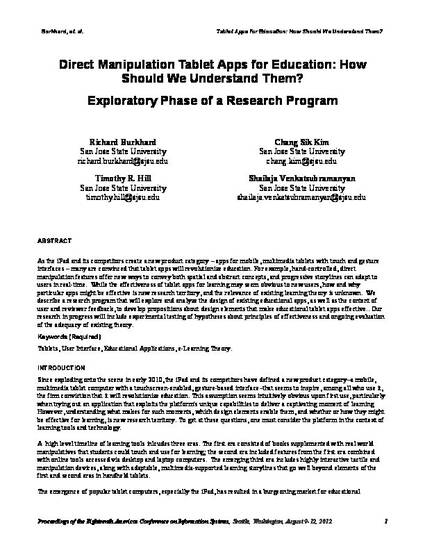
The iPad and its competitors have defined a new product category–a mobile, multimedia tablet computer with a touchscreen-enabled, gesture-based interface–that broadly inspires the firm conviction that it will revolutionize education. And while this assumption seems intuitively obvious upon firsthand use, yet what delineates particular educational applications (apps) as especially effective–what makes them tick–is not yet well understood. The unique hand-controlled, direct manipulation features appear, intuitively, to be key to unlocking the platform's effectiveness for learning ideas that can be represented spatially but also may enable learning of higher level concepts. We study existing educational applications and analyze their design and the content of user and reviewer feedback to hypothesize about essential design elements that make educational applications particularly effective on this platform–those that that deliver compelling educational experiences, and we plan experiments to test the hypotheses that surface.
Available at: http://works.bepress.com/shailaja_venkatsubramanyan/23/
